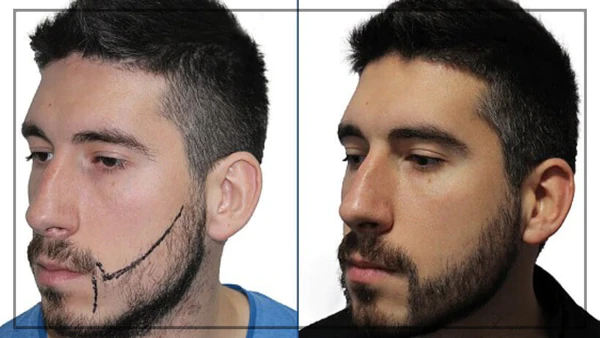Beard Transplants: A Long-Term Solution for Men with Patchy Beards

You may have noticed that your beard is thinning or patchy, making you self-conscious about your appearance. The good news is that a beard transplant Turkey is a solution for men who want a fuller, thicker beard.
In this guide, we’ll explore how beard transplants work, their longevity, and how to maintain them.
Table of Contents
How Beard Transplants Work
Beard transplants involve taking hair from a donor area (usually the back of the scalp) and transplanting it to the beard area. The procedure is performed under local anesthesia, and the transplanted hair will start growing in the beard area within a few months.
The type of hair used for transplantation is crucial. Your surgeon will choose hair that closely matches your beard hair in texture, color, and curl pattern. They will also consider the direction of hair growth to ensure a natural look.
Recovery time and side effects vary from person to person, but you can expect some redness, swelling, and scabbing around the transplant area. Your surgeon will provide post-surgical care instructions, including avoiding physical activity, sun exposure, and smoking during recovery.
Longevity of Beard Transplants
One of the most common questions about beard transplants is how long they last. The longevity of a beard transplant depends on your genetics, age, and lifestyle. However, the success rate of beard transplants is generally high.
Studies have shown that up to 85% of beard transplants are successful, and most patients are satisfied with the results. The lifespan of transplanted hair is similar to that of natural hair, so your beard transplant can last for years with proper care.
Maintenance of Beard Transplants
To ensure the longevity of your beard transplant, you must follow your surgeon’s post-surgical care instructions carefully. This includes avoiding scratching or picking at the transplant area, washing your beard gently with a mild shampoo, and avoiding exposure to extreme temperatures.
Long-term maintenance involves keeping your beard clean, moisturized, and well-groomed. Regularly trimming your beard will help maintain its shape and prevent split ends. Use a beard oil or balm to keep your beard soft and conditioned.
Your lifestyle can also affect the longevity of your beard transplant. Avoid smoking, excessive alcohol consumption, and stress, which can harm your hair health.
Comparison with Other Beard Enhancement Techniques
While beard transplants are popular for men with patchy beards, other beard enhancement techniques exist. Minoxidil is a topical medication that stimulates hair growth and can be used to promote beard growth. However, it is less effective than a beard transplant and requires daily application.
What Is The Best Age For A Beard Transplant?
The best age for a beard transplant varies from person to person, depending on the beard growth rate, hair loss, and overall health. Generally, beard transplants are recommended for men over 30 when the beard hair growth has stabilized, and the hair loss is more evident.
This is because beard hair growth tends to slow down after age 30, and the extent of hair loss is usually more noticeable at this age. By waiting until age 30 or older, the surgeon can assess the extent of hair loss more accurately and plan the transplant accordingly.
However, some men may experience hair loss in their early 20s, making them suitable candidates for beard transplants at a younger age.
It’s important to consult with a qualified surgeon to determine whether you are a good candidate for a beard transplant, regardless of age. The surgeon will assess your hair growth, loss, and overall health to determine the best time for the procedure. Also, consider the beard transplant cost.
Beard transplants are a long-lasting solution for men who want a fuller, thicker beard. With a success rate of up to 85%, most patients are satisfied with the results.
Proper post-surgical care and long-term maintenance are crucial for the longevity of your beard transplant. Consider beard transplants over other options, such as minoxidil or hair transplantation, for the most natural-looking and effective results.




